✥ thanatos sits in a bar... waiting...and waiting... ✥ art history + history + material culture || website coming soon ||
Last active 2 hours ago
Don't wanna be here? Send us removal request.
Text
Created by, for, and about lesbians, On Our Backs came about in the tumult of the “feminist sex wars,” a deeply polarizing internal debate in the feminist movement regarding sex, sexuality, pornography, erotica, and BDSM. Divided into sex-positive and anti-porn camps, the sex wars saw rabid disagreement on what the nature of things like pornography were doing for lesbians and for society as a whole. Many feminists argued that pornography and erotica were inherently objectifying and abusive. Writer and theorist Andrea Dworkin argued that not just pornography but heterosexual sex as a whole was a “means of physiologically making a woman inferior,” and claimed that anyone aroused by porn that depicted sexualized violence (whether real or scripted) “was evidence of a mind that’s absorbed the propaganda of the patriarchy and eroticized the subjugation of women.” On the flipside, sex-positive feminists argued that pornography itself was not an inherent evil, but rather its morality was dependent upon the creators and participants. Rubin, one of the founders of the lesbian feminist BDSM group Samois, believed sexual liberation was a key component of the feminist movement and that public expressions of female sexuality were crucial in asserting women’s existence as fully realized beings.
2K notes
·
View notes
Text
hi did you know that ancient mesopotamians buried their dead under the floors of their own houses to always be close to them? i can't write a poem about this but by god i will write a master's thesis
70K notes
·
View notes
Text
my favourite weird/creepy bits of scottish folklore
19th century "mermaid" sighting on the island of Benbecula.
13th century Hobgoblin Hall allegedly build by a wizard at Yester Castle.
The prophecies of the Brahan seer
The Dunvegan fairy flag.
359 notes
·
View notes
Text

Spooktober Celebrationⵈ🎃ⵈ Location | Lily Dale, New York
Lily Dale, New York, is a unique community known for its rich history in spiritualism, founded in the late 19th century. Established in 1879 as a campground for spiritualists, it became a hub for those seeking to communicate with the spirit world. The community flourished with the help of prominent figures like the Fox sisters, who were instrumental in popularizing spiritualism. Over the years, Lily Dale developed into a year-round settlement, featuring various mediums, healing practices, and events centered around spiritualism. Today, it remains one of the largest spiritualist communities in the U.S., attracting visitors for its seances, workshops, and tranquil, reflective environment.
#edit: spooktober celebration#edit: mine#lily dale#new york#mediums#spiritualism#history#historyedit#history of spiritualism#paranormal#travel#places to go
3 notes
·
View notes
Text

Spooktober Celebrationⵈ🎃ⵈ Location | Seances
Seances have a rich history that dates back to the early 19th century, when interest in spiritualism began to flourish, particularly in the United States and Europe.
The Fox sisters, Margaret (1833-1893) and Kate (1836-1892), played a pivotal role in popularizing this movement after they claimed to communicate with spirits through mysterious rapping sounds in 1848. This sparked a wave of interest, leading to the establishment of spiritualist churches and the practice of seances as a means to contact the dead.
Prominent figures like Allan Kardec (1804-1869), who founded Spiritism and published "The Book of Spirits" in 1857, further developed these ideas, systematizing the beliefs surrounding spirits and their interactions with the living.
Throughout the late 19th and early 20th centuries, seances gained notoriety through the work of mediums like Madame Blavatsky (1831-1891) and Harry Houdini (1874-1926), who both contributed to the dialogue around spirituality, the supernatural, and skepticism, respectively. This blend of mysticism and inquiry established seances as a cultural phenomenon that continues to intrigue and captivate people today.
#edit: spooktober celebration#edit: mine#spiritualism#history#historyedit#harry houdini#fox sisters#paranormal#paranormal history#spiritualism history#dakr history#alternative history
5 notes
·
View notes
Text

Spooktober Celebrationⵈ🎃ⵈ Occult Studies Aesthetic
"The path to paradise begins in hell"
#edit: spooktober celebration#edit: mine#occult#occult studies#occult studies aesthetic#dark academic#dark academic aesthetic#horror academia
1 note
·
View note
Text

Spooktober Celebration ⵈ 🎃 ⵈ Spirit Photography
With the end of the U.S. Civil War and the rise of Spiritualism, spirit photography became a means for people to connect with lost loved ones. At least, that was goal. Fraud photographers would use double exposure (a process where one frame is placed upon another), which make a ghostly figure appear behind the person.
Key photographers: William Mumler, William Hope, David Duguid, Edward Wyllie
Believers: Sir Arthur Conan Doyle, Mary Todd Lincoln,
Disbelievers: P.T. Barnum, William S. Marriott, Harry Houdini
#edit: spooktober celebration#spirit photography#spirit#spirits#ghost#ghosts#photography#edit: mine#19th century#history#historyedit#civil war#spiritualism#sir arthur conan doyle#mary todd lincoln#p.t. barnum#harry houdini
10 notes
·
View notes
Text

Spooktober Celebration ⵈ 🎃 ⵈ White Lady
The white lady is a term given to a female spirit who appears in a white garment. These spirits are often associated with rural areas or with tragic stories of betrayal and unrequited love. Early references to the white lady are in medieval legends where her appearance meant a family member is soon to die. The legend of the white lady appears across the world, where she is called: Dama Branca (Brazil), Onryō (Japan), La Llorona (Mexico), Babae sa Balete Drive (Philippines), and many others.
#edit: spooktober celebration#white lady#paranormal#paranormal aesthetic#crypticcore#paranormalcore#paranormal investigator#history#historyedit#edit: mine#halloween#spiritualism#ghost#ghosts
22 notes
·
View notes
Photo

Spooktober Celebrationⵈ🎃ⵈSpiritualism Movement
Spiritualism became a social and religious movement toward the end of the 19th century. In which, followers believed in a static afterlife, the ability to contact spirits, and that these spirits had moral and ethical insights. Scholars claim Emanuel Swedenborg as the father of Spiritualism.
By 1897, it is believed that spiritualism had 8 million followers across the United States and Europe. Most of these followers: came from upper and middle classes, were women, and supported abolitionism and suffrage.
The movement would weaken from accusations of fraud, but spiritualism is still prevalent today regardless.
#edit: spooktober celebration#spiritualism#spiritualism movement#paranormal#1800s#1890s#1880s#1870s#1900s#1910s#19th century#20th century#victorian#victorian aesthetic#victorian era#ghosts#paranormal history#ghost#occult studies#history#historyedit#edit: mine
25 notes
·
View notes
Text
Queer gaze in art and photography of the past


Konstantin Somov, A Reclining Man, 1936. Somov was gay, and quite openly. Here he painted his lover and muse Boris Snezhkovsky
Paul Cadmus, Jerry, 1931. Cadmus painted Jared French, another artist, while they, as a couple, were travelling around Europe
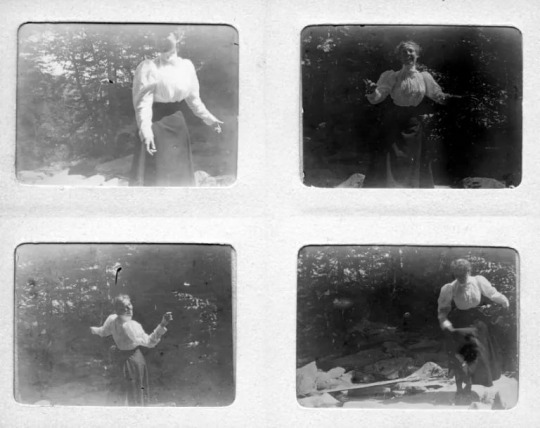
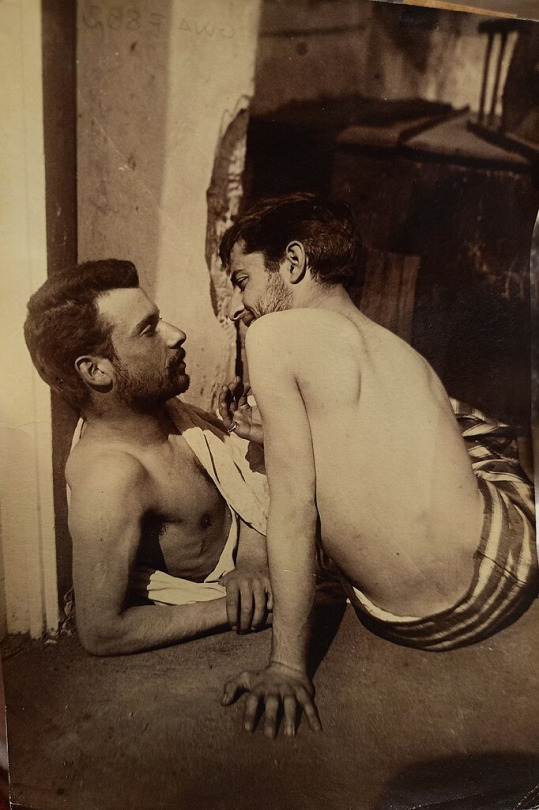
Alice Austen, Gertrude Dancing, 1899. Alice Austeen, a pioneering female photographer, met Gertrude Tate in 1897. They lived together, travelling, throwing tea parties, and riding automobile, until Alice's death in 1952
Wilhelm von Gloeden, Two Men Talking, c. 1895. Von Gloeden was famous for his homoerotic photography and made Italy popular among gay men and lesbians. Although this photo is likely just that, a photo, its meaning is clear


Louise Catherine Breslau, The Toilette, 1898. Breslau lived with Madeleine Zillhardt, fellow artist, for over forty years. She drew her often, like in this tender painting. There's now a street in Paris called Place Louise Catherine Breslau & Madeleine Zillhardt
Andreas Andersen, Hendrik Andersen and John Briggs Potter in Florence, 1894. Andersen depicted his brother Hendrik, a sculptor and the lover of Henry James who caled him his beautiful Henrico. Hendrik met artist John Potter before James, in 1894, through his brother Andreas. The three travelled together in Italy
524 notes
·
View notes
Text

Jean-Michel Basquiat
70 notes
·
View notes
Text
Etiquette of the Edwardian Era and La Belle Époque: Tea
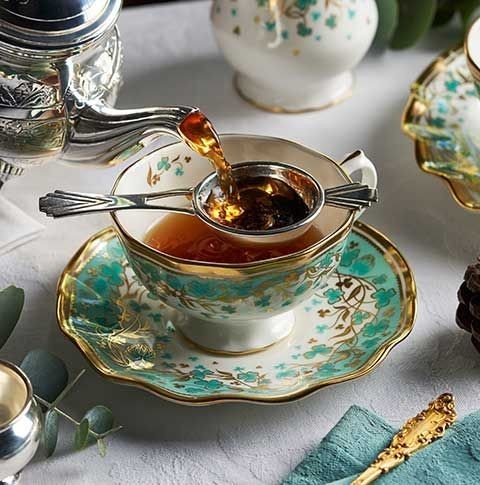
This is a new set of posts focusing on the period of time stretching from the late 19th century to the early 20th Century right up to the start of WWI. I'll be going through different aspects of life. This series can be linked to my Great House series as well as my Season post and Debutant post.
Today will be focusing on the rules of tea with this time period.
Tea was a staple in society, not only as a comforting beverage but as a social gathering beset by strict rules. Etiquette at tea is not only important for guests but is a sign of respect to one's host.
High Tea vs Afternoon Tea
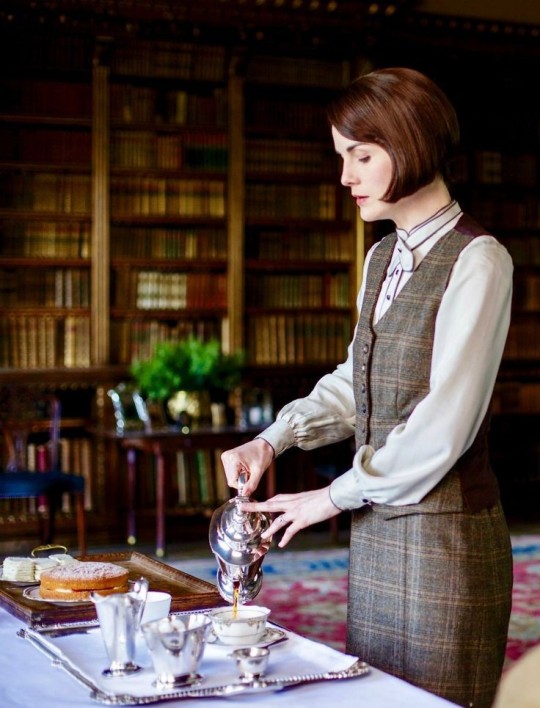
You're reading both terms and you're thinking high tea is the formal version and afternoon is informal. In fact, no. It is the opposite. High tea was actually served far later, about 6pm/7pm and focused on more savoury, substantial dishes. High tea was more of a lower class tradition, designed to fill the stomachs of hungry workers. The word "high" is derived from the tall tables used. Afternoon tea is served at 4pm, designed to fill the gap between lunch and dinner. Afternoon tea is served at low tables with all the guests seated and involve a lighter meal, more nibbles than anything.
Hosting and Attending Tea
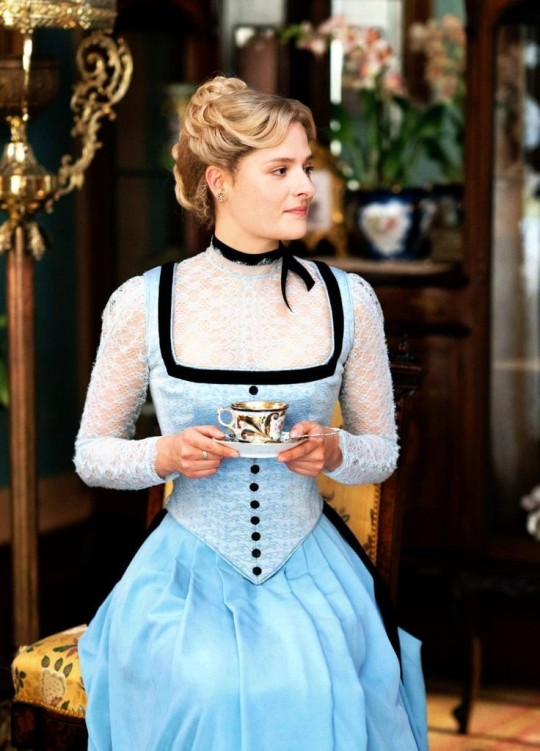
Tea is an event that happens every day, it's not an excuse for a snack, it's a ritual. One can have tea served in one's own home or at the home of a friend. One must be invited to tea, one can't just show up and expect to get fed. Tea was typically served in libraries or drawing rooms and done times outside in the gardens if weather permits. One had to dress for tea usually in comfortable but appropriate clothing. Men would wear suits, women would wear tea gowns or a simple gown - keeping their hats upon their head, if they are visiting. Tea was not poured by the footman but by the host or if it is a large party, by one assigned guest. The hostess or designated tea pourer would serve themselves last.
The Tea Set
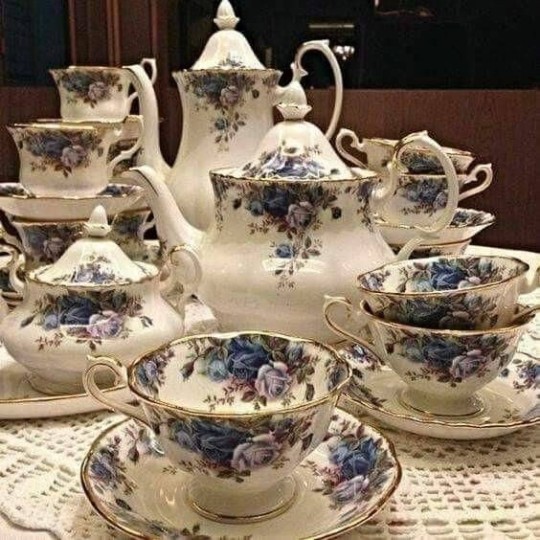
Tea sets are highly coveted and much remarked upon at tea. One would usually inherit a service (that's what the collection was called) or be gifted it at one's wedding. Services would all match and most households had different kinds, the best usually reserved for important guests.
Teapot: the tea pot held the hot water and tea leaves was was usually made of china and decorated.
Cups: the cups were generally low, shallow.
Saucer: a small plate for the cup to rest on
Tea cannister: where dried tea leaves would rest until needed.
Sugar bowl: was a small container made of china with a cover to protect the sugar from moisture.
Milk jug: a container for the milk
Slop basin: was a porcelain dish used for disposing tea leaves left behind with the dregs of tea.
Tea spoon: small spoon used to stir tea
Side Plate: small serving plate used for food.
As you might have noticed, other than a tea spoon, cutlery is not listed. There would be a spoon for jam and a knife for a scone, most food was designed to be eaten with one's hands.
There is also one instrument not listed here and it's the most recognisable thing at afternoon tea.
The Tiered Tray

The tiered tray is a set of trays stacked upon one another holding on each one, a different course. Sandwiches and savouries were served on the bottom (Favourites include smoked salmon, cucumber, cress, egg salad sandwiches), scones on the second and sweeter delights served on the top (sponge cake, macaroons, pastries etc). One would begin ay the bottom and work one's way upward.
Making the Perfect Cup of Tea in the Edwardian Era/Belle Epoque/Gilded Age

Disclaimers: Let's make one thing clear. Tea is not prepared one way for all. Tea is culturally important across the world and every culture has their own rules about how tea is consumed and served. There's no one right way.
I will be discussing the English way of brewing tea in this post.
As mentioned before, tea is held in a cannister before use. Tea leaves were added to the hot water and lightly stirred.
Controversially for most people, milk was commonly added first.
One would then set a strainer in one's cup, tilting the pot. The strainer will catch the leaves and leave your cup almost tea-pulp free.
With the tea added, one could add in sugar. The trick is not to make a show about it or be too loud. One simply should gently turn your spoon from the 6 o'clock position to the 12 o'clock position. Also, the spoon rests on the saucer when not in use and doesn't stay in your cup.
When drinking your tea, put your pinky down. That's an American myth. Simply lift your cup to you, lifting the cup to your mouth by the handle. Saucers are not lifted unless your cup is far away. Don't slurp it, there's plenty more where that came from.
Etiquette at Tea

Afternoon tea is for light conversation, do avoid heavy topics.
Listen attentively when being spoken to.
Don't talk with your mouth full or stuff your mouth. Typically everything should be polished off with 2-3 bites.
Gloves should be removed at tea because one is eating with their fingers.
If one is leaving the table to go to the bathroom or a breath of air, simply turn to your neighbours and excuse yourself. No explanation needed.
Napkins should be removed from the table and set across one's lap when one is sitting down. When finished with tea, set it beside your plate before you rise.
Also you daub, not smear.
Don't cut your scone but break it.
Don't lick your fingers.
Don't bang the spoon on the side of the cup.
Also there's no dunking biscuits into your tea. It's just not done at afternoon tea.
Never thank the staff for fetching anything - or at very least, don't be overhead doing so.
Always say your goodbyes to the hostess and compliment the tea, even if you had a rubbish time.
Also most importantly, never criticise somebody else's manners. That's the height of rudeness.
918 notes
·
View notes
Text
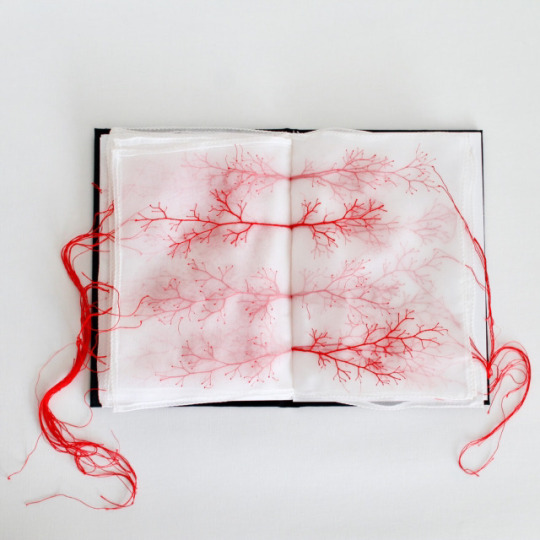
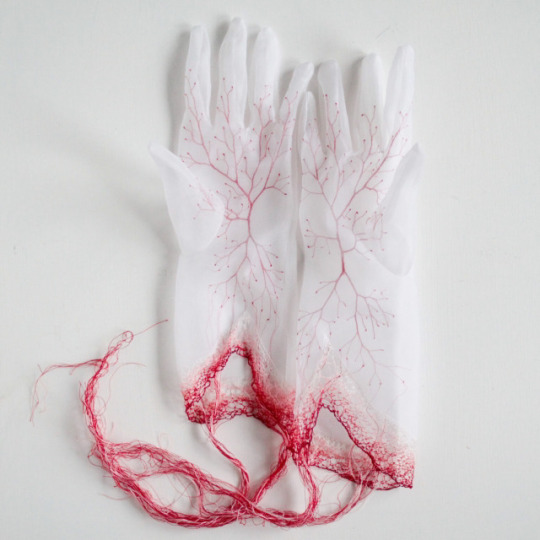
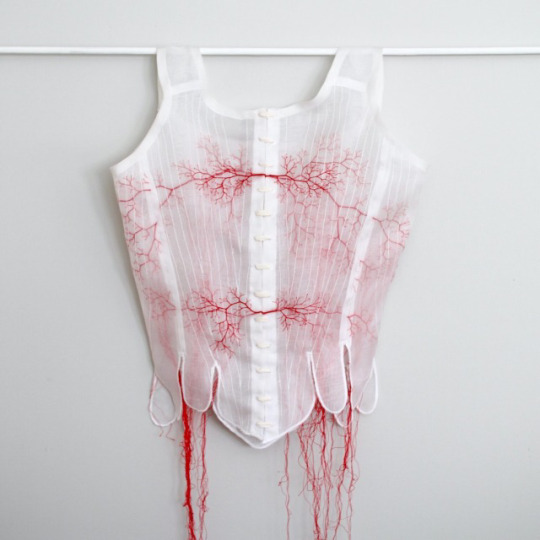
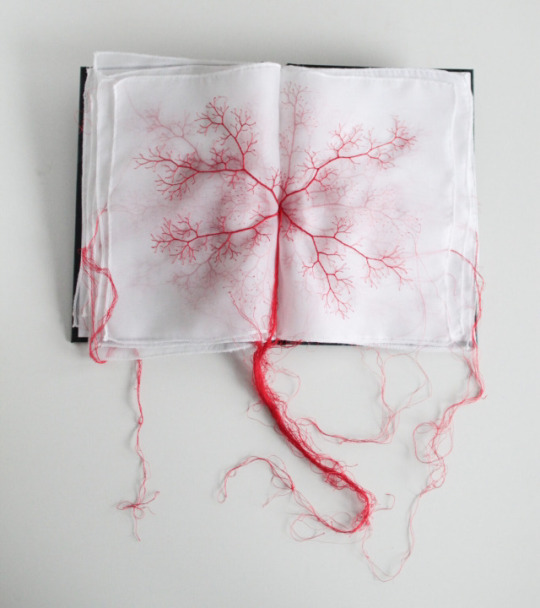
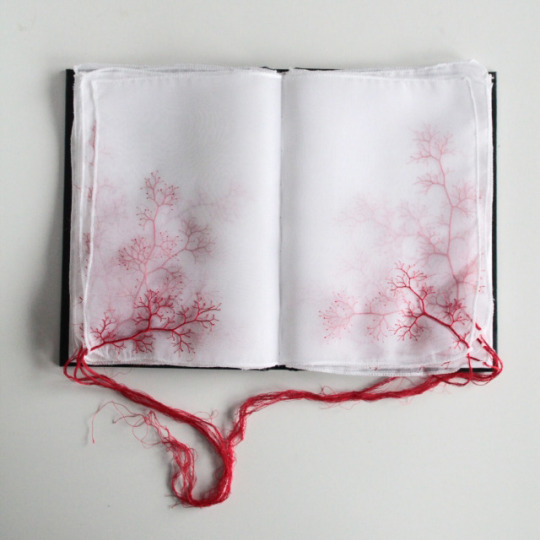
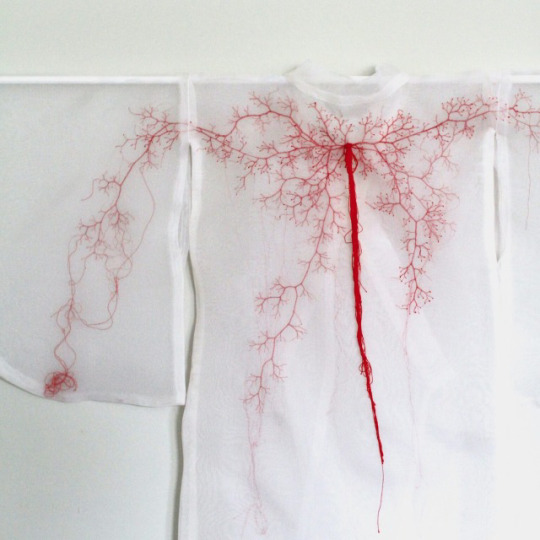
Using Red Thread, Rima Day Intertwines History, Nature, and Human Experience in Striking Embroideries.
#inspiration#(great piece to talk about how objects are living and breathing remnants of the past and ourselves; they have complex stories of their own)
6K notes
·
View notes
Text
Uncle Sam had a green thumb? Digging into the history of victory gardens 🍅🌽🥕

Victory Gardens emerged during World War I as a way to ease the strain on the nation's food supply and foster solidarity among citizens.

Citizens were encouraged to grow their own fruits and vegetables to ensure a steady food supply for both the home front and the troops fighting overseas.
The movement continued during World War II, when the United States faced severe food shortages due to rationing and the need to support a growing military force.

Victory Gardens became a symbol of community, patriotism and self-sufficiency, and by 1944, an estimated 20 million gardens were cultivated across the nation.
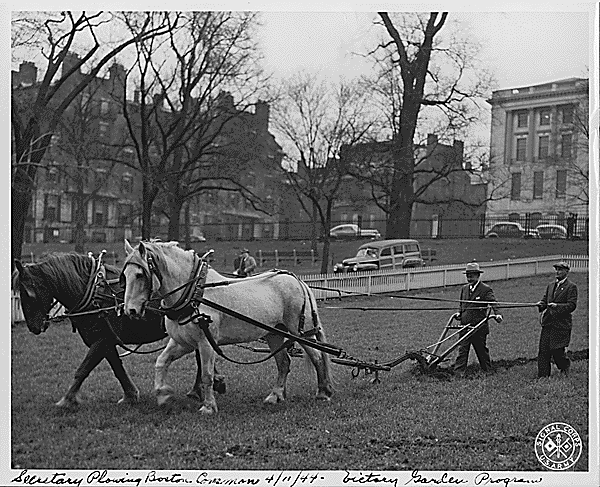
The U.S. government heavily promoted the Victory Garden movement through various initiatives and campaigns. The Department of Agriculture's Extension Service provided guidance and resources, such as instructional pamphlets on gardening techniques, to help citizens establish and maintain their gardens and plots.
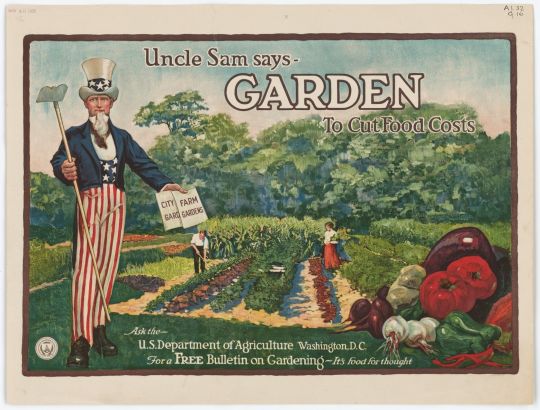
The government also created a range of promotional materials, including posters, films, and radio programs, to encourage citizens to participate in the effort.
Further Reading:
3K notes
·
View notes
Note
Do you have any recommendations of books/ studies/ articles about the representation of queer people in media? Thank you for all the work you do!
Yes absolutely, I would be happy to share. Any discussion like this needs to mention The Celluloid Closet: Homosexuality in the Movies by Vito Russo. Making Queer History does have a set of articles about this as well, with Queen Christina, Queer Codes, and Queer Coding and Different from the Others.
Some more modern books that I can vouch for are:

The Male Gazed: On Hunks, Heartthrobs, and What Pop Culture Taught Me about (Desiring) Men
Manuel Betancourt

It Came from the Closet: Queer Reflections on Horror
Joe Vallese
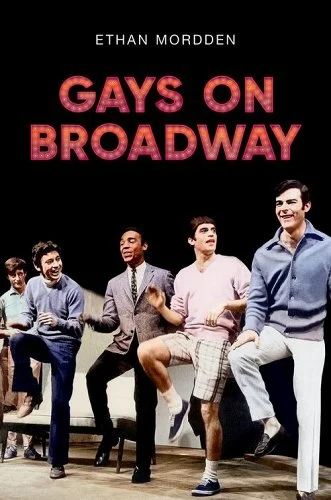
Gays on Broadway
Ethan Mordden

Hi Honey, I'm Homo!: Sitcoms, Specials, and the Queering of American Culture
Matt Baume

We See Each Other: A Black, Trans Journey Through TV and Film
Tre'vell Anderson
(Affiliate links above)
This is just what I have read though, so other's are free to add on!
1K notes
·
View notes
Text

Harvard's Secret Court: The Savage 1920 Purge of Campus Homosexuals
William Wright
In 2002, a researcher for The Harvard Crimson came across a restricted archive labeled Secret Court Files, 1920. The mystery he uncovered involved a tragic scandal in which Harvard University secretly put a dozen students on trial for homosexuality and then systematically and persistently tried to ruin their lives. In May of 1920, Cyril Wilcox, a freshman suspended from Harvard, was found sprawled dead on his bed, his room filled with gas--a suicide. The note he left behind revealed his secret life as part of a circle of (cut young) homosexual students. The resulting witch hunt and the lives it cost remains one of the most shameful episodes in the history of America's premiere university. Supported by legendary Harvard President Lawrence Lowell, Harvard conducted its investigation in secrecy. Several students committed suicide; others had their lives destroyed by an ongoing effort on the part of Harvard to destroy their reputations. Harvard's Secret Court is a deeply moving indictment of the human toll of intolerance and the horrors of injustice that can result when a powerful institution loses its balance.
(Affiliate link above)
1K notes
·
View notes
Photo

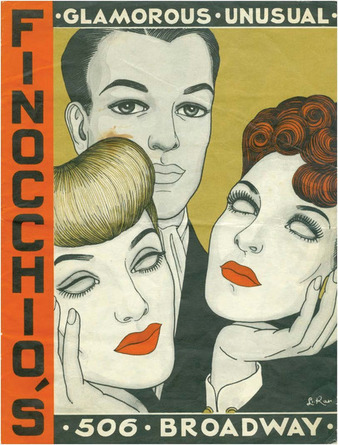

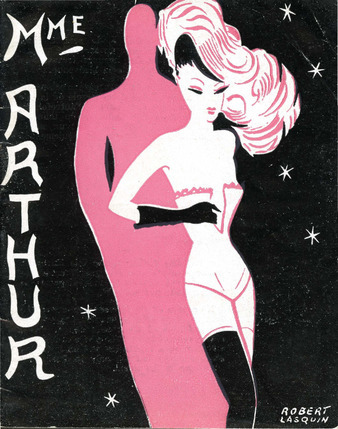





Drag Show Programs
Spanning the globe, these drag show programs have been collected from clubs and revues in major cities including Paris, New Orleans, San Francisco, and London. The oldest of these depict female impersonators and clubs from the 1940s. Though a few of the programs are from one-time events, many of them are part of a series of recurring drag shows at venues such as Club 82, Finocchio’s, Club My O My, Le Carrousel, Madame Arthur’s Nightclub, and the Wonder Club. This collection provides a closer look into the communities that formed within drag clubs, with many names appearing in multiple programs for various clubs.
3K notes
·
View notes